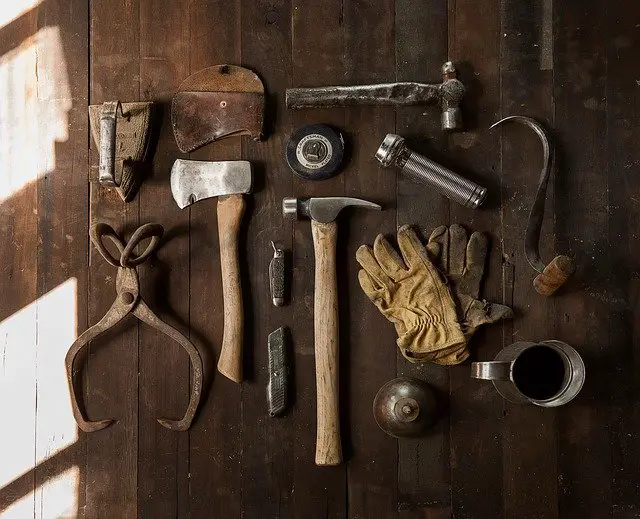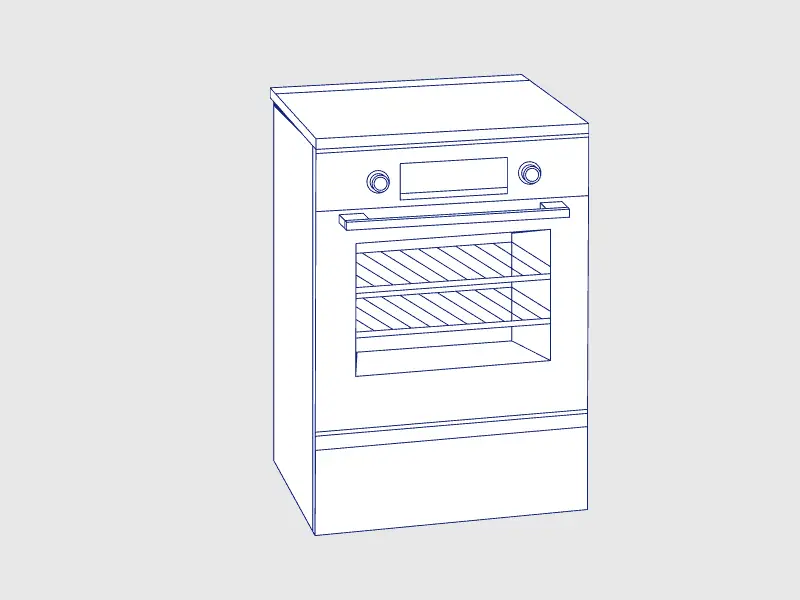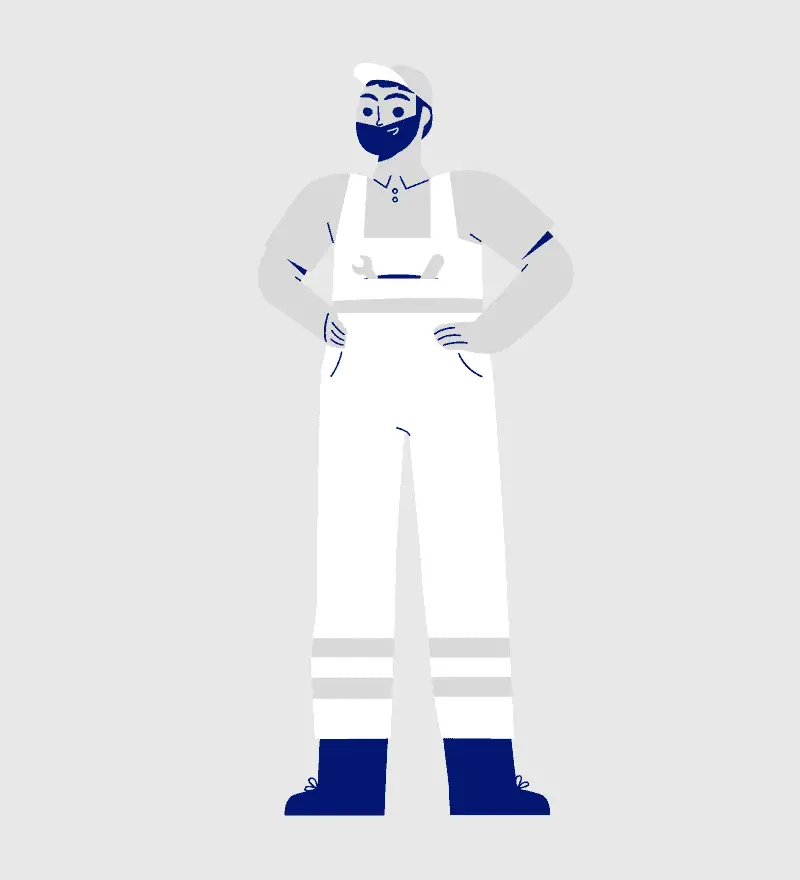
Knowing how to account for repairs and maintenance costs can be tricky at times because its accounting treatment can vary depending on several factors.
In this post, I explain the correct accounting treatment, classification, and double entries of repairs and maintenance costs with the help of examples, diagrams, and interactive quizzes.
Ordinary repairs and maintenance costs are expensed to the income statement when they are incurred. However, major repair costs that improve the efficiency, functionality, or useful life of fixed assets are capitalized in the balance sheet and depreciated over their remaining useful life.
Ordinary Repairs & Maintenance
Most repairs and maintenance costs that are incurred in the normal course of a business are considered as revenue expenditures that should be expensed to the income statement when they are incurred. These include ordinary repairs and maintenance expenses that are necessary to keep up the normal operating condition of fixed assets.
Examples of ordinary repairs and maintenance costs include the expenditures on:
- Repainting a building;
- Replacing a faulty brake in a car;
- Lubricating a machine.
Accounting for Ordinary Repairs & Maintenance
Ordinary repairs and maintenance costs are never capitalized in the balance sheet because these do not improve the fixed assets beyond their normal working condition. They are instead expensed to the income statement as period costs.
When ordinary repairs and maintenance activities take place during an accounting period, we need to create a debit entry in the Repairs and Maintenance Expense Account.
Just like any other expense, the credit entry is usually made to one of the following accounts to complete the double entry:
- Cash in hand;
- Cash at bank;
- Accounts payables (if not paid for immediately); or
- Advances receivables (if the expense is already paid for in advance).
Example 1

Linda owns a pottery studio where she creates custom ceramics for restaurants.
During the recent accounting period, the pottery wheel that is used in making pots developed a mechanical fault.
On 10 March, Linda paid a $20 cash advance to Best Repair Shop to get the pottery wheel fixed.
The repair shop replaced a faulty wire that was causing the issue. The fixed pottery wheel was delivered to Linda’s studio along with a final invoice of $75 on 15 March.
Linda paid the remaining $55 owed to Best Repair Shop via bank transfer on 1 April.
What accounting entries should Linda record for the repairs?
10 March
Debit Advance to Best Repair Shop (Asset) $20
Credit Cash in hand (Asset) $20
The advance given for the repair shop is a prepaid asset of Linda, which entitles her to get her equipment fixed. Once the repair work is done, this amount will be recycled to the expense account.
15 March
Debit Repairs and Maintenance (Expense) $75
Credit Advance to Best Repair Shop (Asset) $20
Credit Payable to Best Repair Shop (Liability) $55
The full amount of repair cost is recorded when the repair work is completed. As the services against which the advance was given by Linda have been provided by the repair shop, it is no longer a receivable and should therefore be credited.
The difference between the total expense ($75) and the cash advance ($20) is recorded as a liability owed to the repair shop.
1 April
Debit Payable to Best Repair Shop (Liability) $55
Credit Cash at bank (Asset) $55
The final payment to the repair shop cancels the previously recorded liability.
Capital Improvements
The cost of major repairs should be capitalized in the balance sheet when they result in substantial improvements in a fixed asset by:
- Increasing its useful life or residual value;
- Expanding its capacity;
- Improving its efficiency; or
- Modifying it to make it more useful to the business.
Accounting for Capital Improvements
Instead of immediately charging the repair cost as an expense, capital improvements are first debited to the relevant fixed asset account.
The amount of capital improvement is charged as depreciation over the remaining useful life of the asset along with any previous cost that is yet to be depreciated.
Example 2

Linda purchased an electric kiln for her pottery studio on 1 January 2020. The cost of the kiln was $12,000, which she paid in cash. Linda estimated the residual value of the oven at $2000 at the end of its useful life of 5 years.
On 25 December, there was a voltage fluctuation in the power grid which caused the kiln to stop working.
On 26 December 2020, Harry, a technician from Best Repair Shop, visited Linda’s studio to get the kiln up and running again.

As it turned out, luckily, the only thing that was causing the kiln not to fire up was a fuse that needed to be replaced. Linda paid $50 cash to Harry for the repair job.
To make the kiln less vulnerable to voltage fluctuations in the future, Linda agreed to install a voltage stabilizer on the advice of Harry.
Harry also advised Linda to modify her kiln so that it can operate on gas in addition to electricity which will increase its useful life by 4 years and make it more economical to operate.
On 1 January 2021, Linda purchased a voltage stabilizer for $2000 cash. The stabilizer has a useful life of 4 years, at the end of which it will have no residual value.
The same day, she asked Harry to make the modifications to her electric kiln, which cost her $3000. Linda paid $3000 to Best Repair Shop the same day via a bank transfer.
The modifications to the kiln will increase its residual value by $1000.
Linda prepares her book of accounts on 31 December each year.
What accounting entries should Linda record for the accounting years 2020 and 2021?
1 January 2020
Debit Kiln (Fixed Asset) $12,000
Credit Cash in hand (Current Asset) $12,000
26 December 2020
Debit Repairs and Maintenance (Expense) $50
Credit Cash in hand (Current Asset) $50
The cost of replacing the kiln’s fuse is a minor repair that should be charged as a period expense.
31 December 2020
Debit Depreciation expense (Expense) $2000
Credit Accumulated Depreciation of Kiln (Fixed Asset) $2000
Annual depreciation expense of the electric kiln is equal to $2000 [($12000 – $2000) / 5 years].
1 January 2021
Debit Stabilizer (Fixed Asset) $2000
Credit Cash in hand (Current Asset) $2000
The stabilizer is a fixed asset that must be capitalized and depreciated separately from the kiln.
1 January 2021
Debit Kiln (Fixed Asset) $3000
Credit Cash at bank (Current Asset) $3000
The modifications to the electric kiln are a major improvement to the fixed asset. Its cost should therefore be added to the fixed asset account already created for the kiln.
31 December 2021
Debit Depreciation expense (Expense) $1750
Credit Accumulated Depreciation of kiln (Fixed Asset) $1250
Credit Accumulated Depreciation of Stabilizer (Fixed Asset) $500
The annual depreciation expense of the stabilizer is equal to $500 ($2000 / 4 years].
To calculate the depreciation of kiln for this year, we need to recalculate its depreciation base by adding up the carrying value at the start of the period and the additional cost capitalized during the period, and divide by the remaining useful life.
Working:
The net book value of the kiln on 1 January 2021 $10,000
Add: Additional cost of modification $3,000
Revised cost $13,000
Less: Residual value $3,000
Revised depreciation base $10,000
The remaining useful life on 1 January 2020 is 8 years.
Annual depreciation of kiln after modification is therefore equal to $1250 ($10,000 / 8).
Total depreciation expense is equal to $1750 ($500 + $1250).
Quiz
How much do you know about Repairs and Maintenance Accounting?

Question 1
Major repair costs can be capitalized as fixed assets in the balance sheet.
True
Spot on!
False
Incorrect.
Question 2
The cost of any repairs and maintenance that are necessary to preserve a fixed asset’s working condition can be capitalized and depreciated.
True
Not correct.
False
You're right!
Repairs and maintenance are capitalized that merely preserve the normal working state of a fixed asset are immediately expensed as a period cost.
Question 3

The cost of replacing the damaged cable of an office printer with a brand new one should be debited to which account?
Office Printer
(Fixed Assets)
Not correct.
Repairs and
Maintenance
(Expenses)
You're right!
Minor repairs of this sort are treated as an expense.
Question 4

Following repair and maintenance work was done on a cab on a recent repair job:
- Fixed a broken side-view mirror – $80
- Repainted the car bumper – $100
- Oil change – $50
- Engine overhaul – $2000
What amount will be debited in the repairs and maintenance expense account?
$2230
Not correct.
$2000
Not correct.
$230
You're right!
$80 + $100 + $50 = $230
The only cost that will not be immediately expensed is the cost of the engine overhaul, which represents a major repair expenditure that should be capitalized.
$130
Not correct.
Illustration provided by Icons8.
How many questions did you answer correctly?
Score Grade
4 Master
3 Pass
